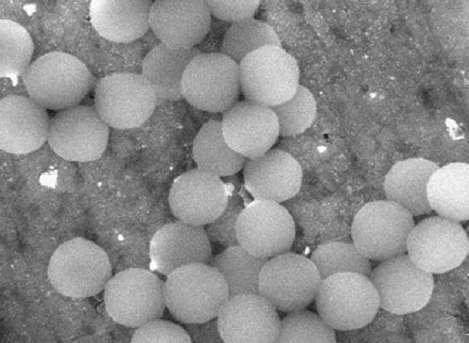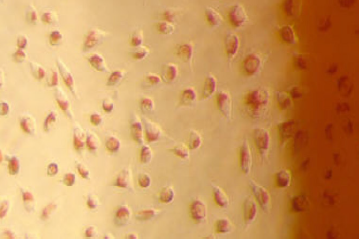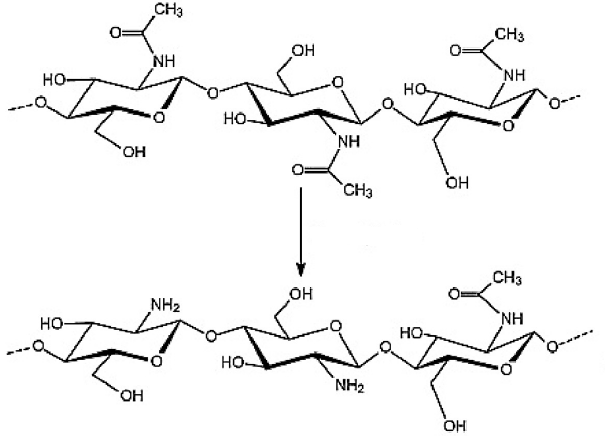Biocompatible coatings and coatings of medical devices

Medical devices require coatings that either are inert and they do not pose a threat to human health or coatings that are designed for controlled release of bio compounds into blood, skin or tissues. Such coatings have been based on natural and synthetic polymers and have been formulated either as homopolymers or copolymers. Some of the most popular choices that exhibit properties desired in this project include:
- PVC based polymers with various plasticizers and performance additives.
- Various poly urethanes
- 100% natural based coatings mostly based on cellulose, chitin, chitosan and other similar biocompatible, bio degradable polymers
- PP based coatings
PVC class of bio medical coatings is a vast one; literally thousands of formulations exist that are based on physical or chemical modification of PVC based polymers for similar applications. PVC polymers for medical devices are mostly ‘soft’ formulations meaning that they include 10-50% w/w of plasticizer. Although PVC itself has been considered non toxic, non carcinogenic and safe, the inclusion of such plasticizers has often led to health related issues, mostly due to leakage of the plasticizer itself. This fact has led to at least three different approaches for using PVC for medical devices coatings and manipulating of its properties. The first includes the modification of plasticizer (type, content, inclusion), the second is based on using alternatives to PVC and the third a more efficient production of the coating that prevents spillage even at minimum levels.
PVC currently offers some advantages as the base compound for biocompatible coatings for medical devices due to the immense progress in the field of alternative plasticizers, low cost, high transparency, very good mechanical properties and progress in its disposal and recycling.
Various plasticizers have been tested, developed and industrially applied during the last decade. The main aim was to substitute for the commonly used di-2- ethyl hexyl phthalate (DEHP) or other closely related phthalates. DEHP is the main reason for PVC based coatings being not considered suitable for some medical devices applications. DEHP leaks greatly under various physical, chemical and mechanical conditions and thus degrades PVC coatings acceptance by authorities and manufacturers.

Alternatives to DEHP or other phthalates as plasticizers exist and many of them have been recently discovered. Some of them are still in research stage in order to decide on their life cycle and long term health effects. The main categories of alternative plasticizers include Citrates, Azelates, Ionic Liquids, Adipates, Trimellitates, and different organic plasticizers [short molecules, elastomers, etc]. In the case of elastomers and other polymeric plasticizers, one could describe the plasticizing process as compositing.
Phthalates have been intensely investigated as plasticizers due to DEHP’s recognized success. Despite the fact that many of them seem extremely unsuitable [DIDP and DINOP are allowed in concentrations lower than 1% in sensitive applications], at least two of them have been confirmed as appropriate plasticizers for PVC based coatings. Di- isonyl phthalate (DINP) and di-2 – ethyl hexyl- terephthalate (DEHT) are accepted as non toxic alternatives to DEHP for medical devices. It has to be noted that DINP exhibits comparable toxicity to DEHP but at considerably higher levels of exposure. Toxicity is the first important factor considered when plasticizers are discussed. The second is the actual leaking factor of the plasticizer under expected conditions of use. Leaking of plasticizers out of the polymeric matrix is a function of many factors such as solubility, mobility in the matrix, incompatibilities, interaction mechanisms with the matrix, and others. It is common that a plasticizer with a higher toxicity leads to formulation of a less toxic PVC based coating due to limited or negligible leaking rate.

A very promising class of plasticizers comes from Ionic Liquids. Ionic Liquids are also called molten salts, room temperature ionic liquids, and other combinations of these names. Ionic Salts are typically viscous liquids at temperatures well below 100C and most commonly in room temperatures. This is attributed to their poor coordination of ions (typically one is bulk and the other is small). Ionic Liquids are also described as designer solvents as they can be designed (combination of cation and anion) to exhibit tailored properties such as adsorption efficiency towards target compounds. This attribute has led to their extensive use and application in fields like separation and purification technologies, extraction solvents, plasticizers for polymeric formulations and others. Ionic Liquids are a vast class of materials. Up to date more than 22,000,000 have been identified although just a few thousands have hit the market. Ionic Liquids based on phosphonium, ammonium and imidazolium have exhibit excellent results as plasticizers for PVC based coatings. This approach is maybe the most promising of those presented in this report as it can lead to novel, patentable formulations for PVC based medical coatings. The immensely high number of potential plasticizers leads to the conclusion that tailored made plasticizers can be based on Ionic Liquids or mixtures of them. Among the major advantages of Ionic Liquids one should consider their negligible vapor pressure that makes them accepted as green solvents. On the other hand their cost is higher than most plasticizers and their total required content in relation to their efficiency will decide their widespread application in the field.

Another investigated class of novel/ non toxic plasticizers is that of Citrates. Citrates are produced from a natural source (Citric Acid) and this in a significant advantage over other plasticizers’ classes. There are also very suitable for mixing with PVC formulations due to their aliphatic structure. Due to our complete understanding of citric acid’s derivatives, numerous plasticizers have been suggested and tested for PVC formulations. Among various commercial products, one can identify the Citroflex series as suitable for various applications. Citrates exhibit the advantages of abundancy, biocompatibility, moderate cost, known chemistry and numerous derivatives. However, their one shortcoming is the significant leakage from the polymeric matrix. Current investigations are focusing on minimizing or reducing this leakage of the biocompatible plasticizer.
Trimellitates are similar to citrates; they are derivatives of trimellitic acid and they are mostly esters with alcohols. This class of plasticizers has been studied as independent plasticizers and in combination with DEHP as well. The reason for the combination with DEHP is that when those two work together, leaking is minimized. Trimellitates exhibit most if not all of DEHP advantages while the potential shortcoming comes from our uncertainty about their toxic effects. Reasons behind this are QSAR based structural analysis and obvious chemical structure resemblance to DEHP.
Another known approach for the synthesis of efficient yet non leaching plasticizers has led to the modification of the aromatic DEHP ring with a cyclohexane ring. The logic behind this modification was to reduce polarity of plasticizer molecule and thus render it less soluble in aqueous environments. Lower solubility results to lower mobility and leaching as experimentally confirmed as well for the Cyclohexane modified DEHP plasticizer. Obviously, this approach could be extended to other substituents as well, especially cyclic molecules with aliphatic side groups. This concept should be investigated further, initially via a large range scanning via computational chemistry predictions and on a later phase via experimental testing and optimization of chemical structures. This approach targets both the polarity [electronic property] and the steric inhibitions induced, especially with the insertion of long or bulky side chains and groups. Future work should focus on attempting such steric inhibition via known biocompatible molecules such as chitin, chitosan, citric acid derivatives and others. To the best of current knowledge, this approach presents no or minor shortcomings for replacing or working in combination with DEHP.
Other known plasticizers are azelates and adipates. Both classes seem suitable for application in PVC based coatings since they offer reduced mobility and solubility in aqueous media and thus reduced leaching. In fact, numerous commercial solutions based on them exist for various PVC formulations. Their up to date use in coatings of medical devices remains limited due to recent findings on some class members toxicity. It does seem probable that any of these classes will exhibit market success unless confirmed non toxic structures are created.
Another employed approach for the simultaneous optimization of leaching behavior and non toxic character is based on the use of polymers as plasticizers. This approach resembles compositing and is based on the inherent affinity of polymeric chains that leads to decreased mobility and reduced leaching. Factors that determine the overall effect on thermal, mechanical, chemical properties for the PVC based coating include polymer chain length, crosslinking, functional groups, and others. The general belief is that polymeric plasticizers are not as effective as DEHP. However, appropriately working through desired properties can lead to optimum approaches for this design.
Polyesters and elastomers are the main two classes that can effectively function as plasticizers for PVC coatings. Various elastomers (or elastomer- like) compounds have been already used independently or in combination with DEHP. Among them carboxylated nitrile rubber, epoxidized natural rubber, polysiloxane based plasticizers and nitrile rubber are the most studied ones. In all of the above cases the polymeric plasticizers led to a significant reduction in DEHP leaching and in some cases they also enhanced mechanical and thermal properties. Polymeric plasticizers induced their attributes into the polymeric matrix [host] in ways dependent on total content, other additives, guest- host interactions and manufacturing approach.
